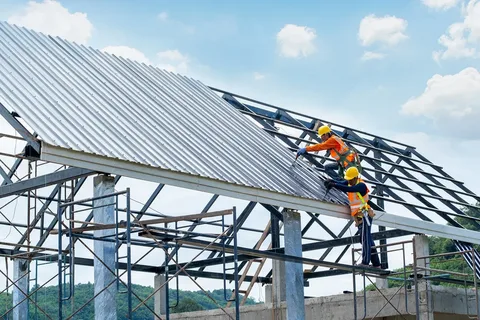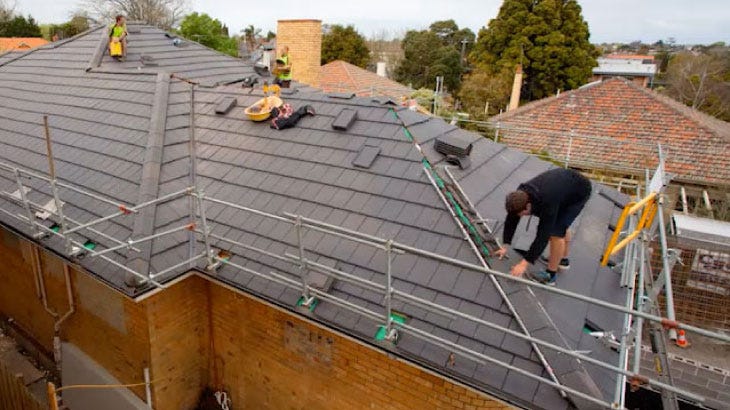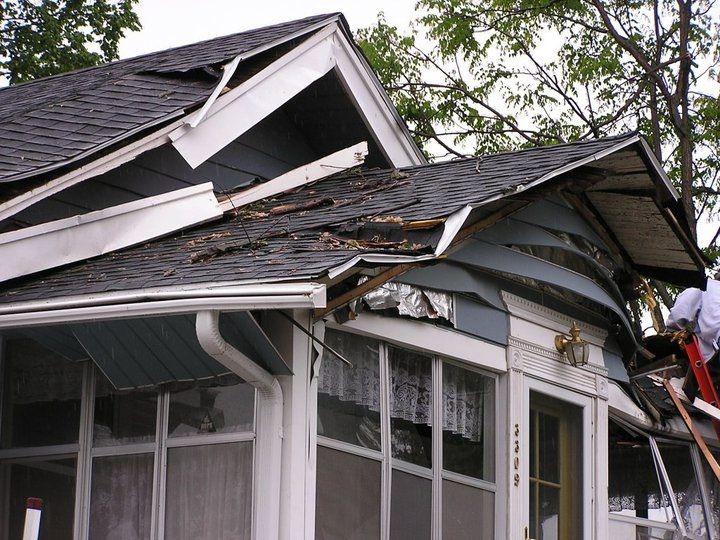Find out how to notice roof leaks and prevent water damage this spring. Use easy tips to protect your home.
Introduction
Spring is a season of renewal and growth, but it can also bring unpredictable weather, including heavy rainfall, strong winds, and melting snow. These conditions can stress your roof and cause leaks that lead to water damage inside your home. Detecting and fixing roof leaks early is essential to preventing mold, structural issues, and other costly repairs.
In this article, we’ll guide you through the process of spotting roof leaks, understanding their causes, and implementing strategies to prevent water damage this spring.
-
Common Causes of Roof Leaks in Spring
Several factors contribute to roof leaks during the spring season. Understanding the causes can help you take preventive measures before issues escalate.
Clogged Gutters
One of the most common causes of roof leaks in the spring is clogged gutters. When gutters are blocked with debris like leaves, branches, and dirt, water backs up and overflows, potentially seeping under your roof’s shingles and causing leaks.
- Action Step: Clean your gutters regularly and install gutter guards to prevent debris from accumulating.
Damaged Shingles
Winter weather can weaken shingles, especially if they have been exposed to ice dams, snow, or strong winds. When the spring rains come, damaged or missing shingles can allow water to penetrate your roof, leading to leaks.
- Action Step: Inspect your shingles for cracks, curling, or missing pieces. Replace damaged shingles promptly to prevent water infiltration.
Improperly Sealed Roof Flashing
Roof flashing, which seals joints around chimneys, skylights, and vents, can deteriorate over time. Once the seal is compromised, water can seep under the flashing and cause leaks, especially during heavy spring rain.
- Action Step: Inspect your roof’s flashing and reseal or replace it if necessary. Ensure there are no gaps or cracks around vulnerable areas.
Damaged or Missing Caulking
Spring weather brings rain and moisture, and if the caulking around roof joints or vents has deteriorated, water can easily penetrate the roof structure.
- Action Step: Check the caulking around vents, skylights, and chimneys. If it’s cracked or missing, reapply a high-quality roofing sealant.
-
Signs of Roof Leaks
Identifying roof leaks early can save you from expensive repairs and structural damage. Here are the most common signs that you may have a roof leak:
Water Stains on the Ceiling
Water stains are usually the first sign that water is entering your home. These stains appear on your ceilings or walls and often get larger over time as the leak worsens.
- Action Step: If you see water stains, act quickly by checking your roof for damage and calling a professional roofer.
Mold or Mildew Growth
Mold and mildew thrive in damp, humid conditions. If you notice an earthy smell or black spots on your ceiling, walls, or attic, it’s likely that water has infiltrated your roof, creating a breeding ground for mold.
- Action Step: If you find mold or mildew, address the leak immediately and clean the affected areas. Consider using mold-resistant paints after repairs to prevent future growth.
Visible Wet Spots in the Attic
Inspect your attic regularly, especially after storms. Wet spots, water stains, or damp insulation in the attic can indicate a roof leak. Pay attention to areas around vents, chimneys, and skylights, as these are the most vulnerable spots for leaks.
- Action Step: Look for water marks or wet insulation in your attic. If you see any signs of moisture, contact a professional roofer for an inspection.
Dripping Water
If you hear or see water dripping inside your home, this is a clear sign that you have a significant leak. Drips are often most noticeable during or immediately after a heavy rain.
- Action Step: If you spot or hear dripping, make sure to take immediate action to repair the leak before it causes major water damage.
-
Preventing Roof Leaks This Spring
While it’s crucial to address existing leaks, prevention is key to avoiding future roof damage. Here are steps to take to keep your roof in top shape this spring:
Regular Roof Inspections
The best way to spot roof leaks before they become major issues is by scheduling regular roof inspections. A professional roofer can identify any weak spots in your roof and address potential problems before they escalate.
- Action Step: Schedule a roof inspection with JC Master Inc. to ensure your roof is ready for the spring rains. Our experts will thoroughly assess your roof and provide recommendations for maintenance.
Roof Waterproofing
Waterproofing your roof can help protect it from rain, snow, and other moisture-related damage. Many roofing systems offer waterproofing treatments that make your roof more resistant to water infiltration.
- Action Step: Consider having a waterproofing treatment applied to your roof, especially if your home is older or has previously experienced leaks.
Regular Gutter Maintenance
Gutters play a crucial role in keeping your roof dry. If gutters become clogged, they can cause water to pool on the roof, leading to leaks and water damage. Regularly cleaning and maintaining your gutters can prevent these issues.
- Action Step: Clean your gutters regularly, especially during the spring when heavy rain is expected. Install gutter guards to minimize debris buildup and improve drainage.
Install a New Roof if Necessary
If your roof is old, worn, or has significant damage, it may be time to replace it entirely. A new roof with modern, weather-resistant materials can protect your home from water damage for years to come.
- Action Step: If your roof is nearing the end of its lifespan, consult with a professional roofer to discuss roof replacement options.
-
What to Do if Your Roof Leaks
If you discover that your roof is leaking, it’s important to take immediate action to minimize damage. Here’s what you should do:
- Contain the Leak
If you notice a leak, take steps to contain the water and prevent further damage. Use a bucket or container to catch any drips, and lay down towels or plastic sheets to protect furniture and flooring.
- Call a Professional
Contact a professional roofer as soon as possible. If your roof is leaking, a qualified expert can assess the damage, patch the leak, and prevent further problems.
- File an Insurance Claim
If the leak has caused significant damage, it may be time to file a claim with your homeowners’ insurance. Be sure to document the damage with photos before making repairs.
Conclusion
Roof leaks can cause significant damage if not addressed quickly, but with proper maintenance and early detection, you can prevent most issues. Regular inspections, proper maintenance, and timely repairs will ensure that your roof stays protected throughout the spring rains.
If you suspect a roof leak or need roof maintenance, contact JC Master Inc. today for a free consultation. Our expert team can help you prevent leaks and protect your home from water damage this spring.


